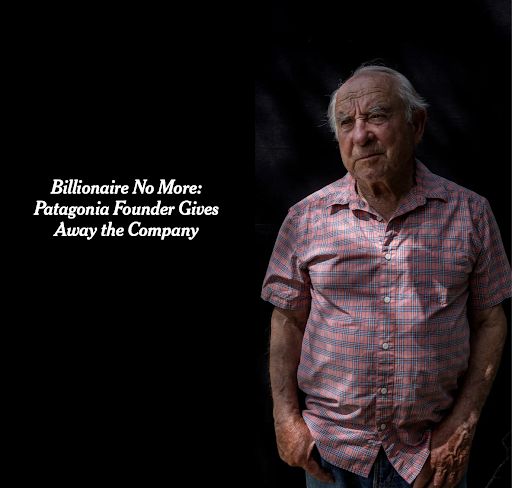So you want to bring your life science brand to life? Then build your brand house.
A lovable brand is a remarkable thing. Although the brands we love are different for each of us, everyone has experienced their power and allure. It feels like our favorite brands talk to us, live with us… dare I say it – are part of us. I think anyone who is fascinated by commercial enterprises and marketing strategies must also be fascinated by the seductive role of branding. We all know that great brands can accelerate the uptake and the loyalty to your company. But how do they work? And how do you build them?
I’m a scientist by training, so when I first approached branding, it was an alien subject to me. I entered through a sales and marketing job for a new scientific product, and I didn’t have the faintest idea how a brand works. Since the company was a startup, we didn’t really have a brand, either. Our competitors had serious brand equity, which was really bad news for us.
Not that I hadn’t any experience of brands — of course I had. I don’t think there’s a human being on the planet who hasn’t experienced the power of a brand. In fact, it’s impossible not to be affected by branding, because branding is at the core of what it means to be human. After all, brands build trust, a deeply rooted human value.
Brands come in all shapes and sizes. They don’t have to have a logo. They don’t need to have a vision statement. They don’t even necessarily need to sell you anything. To illustrate my point, allow me to mention my favorite brand experiences: David Bowie, Arsenal, Rough Trade and Pharmacia LKB. Indulge me for a moment – I will talk about my favorite things to illustrate how brands can be quite different from each other, but adhere to a common principle.
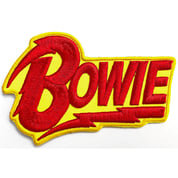
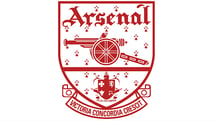


Some brands that I love: Bowie, Arsenal, Rough Trade, Pharmacia.
David Bowie is my idol because in my formative years he seemed to change the musical landscape every year, with every record he released. He was fascinating to watch and follow. (This was way before the internet existed, so keeping track of your heroes required quite a lot of effort.)
I’ve been an Arsenal supporter from the age of 7, following every English League match from Hong Kong (where I lived then). I nearly died of happiness when I emigrated to London and I could watch them play regularly at Highbury and now at Emirates Stadium.
Rough Trade was my record store window into Punk Rock and New Wave. Every time I walked into the store, I was aurally arrested by new sounds. The shopkeepers, some of them still my mates, were generous in letting me listen to everything without having to buy a thing. When I walked out, my mind was always expanded, and quite often blown.
Finally, Pharmacia LKB saved my PhD thesis with just the right equipment at just the right time. I say an eternally grateful thank-you to their helpful application specialist and Ultrospec III, one of the first spectrophotometers with a programmable instruction set.
So what’s the common factor?
8 principles for building your brand
In this article, I’m going to help you understand how branding works in the esoteric world of life science. I say esoteric, but it’s also a fast-growing area, and the principles I’m going to outline are perfectly valid to any field.
The reason for the current exponential growth of life science branding is the insane number of ideas and innovations that are coming out of the life sciences and that are blossoming into new companies and commercial entities. These organizations would all benefit from strong brands. The same ideas also apply to other rapidly growing and diversifying fields of innovation, such as IT, engineering, and AI, where branding is equally vital.
Principle 1: You fall in love with a good brand – not its products
No matter how good a product is, it is ultimately unlovable. The product, on its own, is rather uninteresting. It will age and it will inevitably become defunct. One day, you might even be embarrassed for having bought one. What’s more interesting is what the product stands for.
My cousin’s first car was a Ford Mustang. He had the latest in-car entertainment installed: a brand new 8-track. He lived in San Francisco. His hair was perfectly messy, and his shades were stunning. The entire package represented one thing to me: coolness. Ever since that day I first saw him leaning against his car, the brand of the Mustang eternally resonated in my mind. But it wasn’t really the product that thrilled me: it was what it stood for.
I have an original iMac waiting at my front door, ready to be sent to the recycling station. It’s good for absolutely nothing. I can’t run a single application on it. I can’t even use it to surf. But still, I hang on to it. Why? Because of this:
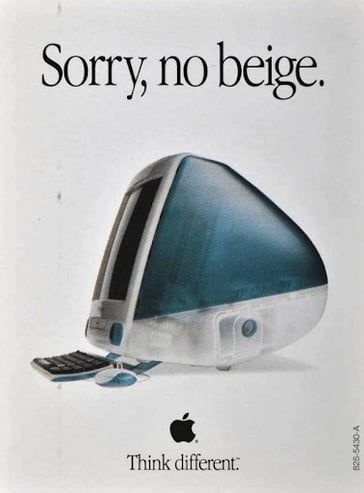
When I bought my first iMac, I might have thought I was buying a product. But I wasn’t. Rather I bought into what it stood for: a breath of freshness in an ocean of beige-only boxes: Thinking different.
What you fall in love with is why a product exists. It represents a purpose, a reason to believe in something, a vision of a better future. A vision of a better life.
Principle 2: Make the brand stand for something worth standing for
So the product can be a physical manifestation of a belief? Yes, that’s right.
Humans have something inherent in us that makes it impossible to be purely rational beings: we need to believe in things. Be it the cohesion of your family, the value of democracy, the protection of the environment, or the importance of your job, among countless other concepts, our need to create meaning through belief is ultimately what makes us human.
So are we being taken for a ride by all the companies with carefully nurtured brands? Well, we would certainly be idiots if they made us a promise that they didn’t or couldn’t live up to – then they would have no intention of being true to their brand.
Consider this:
From the New York Times article
The Patagonia CEO, Yvon Chouinard, transferred ownership of Patagonia to a trust and a nonprofit organization dedicated to ensuring that all of Patagonia’s profits are used to combat climate change and protect undeveloped land around the globe.
Patagonia’s brand was always about the preservation of the natural world. Yvon has committed to that promise by staking the company and his fortune to the cause. If you believe in the cause, I am sure that you would support Patagonia by buying its products. And you wouldn’t be wrong in doing so. In so doing, you’d be furthering a cause that you believe in.
Principle 3: The brand must be authentic
Given what I’ve just written, hopefully it’s utterly clear that a brand has to represent real, solid, dyed-in-the-wool values. And those values can not be betrayed.
In many ways, a personal brand – in other words, values that represent an individual person’s beliefs – is simpler and safer to manage than an organizational brand. You are more invested in yourself, and what you stand for, perhaps more so than in anything else in the world. And of course, you have full control over yourself. You can’t say the same for the members of an organization.
This is an important way to think about your organizational brand: the demand for rigor and consistency is high. That’s why when we do a brand audit, it’s vital that we identify those unshakable tenets of behavior shared by all employees, and those transmitted immediately to all incoming employees.
Principle 4: The brand must be lived by everyone in the organization
Which brings me to this next principle: the instilling of the appropriate behaviors in each representative of your brand. Actually I have phrased this back-to-front to reveal a crucial dependency. There is absolutely no way, especially in today’s world of free-thinking, free-speaking, disobedient individuals that we’ve nurtured, that you are going to get people to behave in a certain way unless they are bought into why they should behave that way.
I have a colleague, Jesper Ek, who has successfully focused on instilling behaviors in teams because he is utterly convinced, as he says, that everything begins with people. His method involves making them part of a shared set of beliefs. The company he worked for is active in the medical device industry, specifically for diabetes. They sold insulin pumps and sensors that, of course, were meant to make money. Everyone in the organization had been browbeaten to boredom with the same old message: sell more stuff for the benefit of the shareholders. The sales figures kept on declining, year after year.
Jesper succeeded in turning it around. His message to the team was: Forget the money. We’re in this business to help diabetes patients lead as normal lives as possible.
The transformation was astounding. The engagement of the team became total. Why? Because they believed in the mission. Jesper recounts an anecdote where one of the salespeople, also a diabetes patient, wore a pump under her summer dress to customer visits to show how unencumbered her life had become. It was so undetectable that the nurses couldn’t tell she was wearing one. To prove it, she whipped off her dress. Standing in her underwear, she pointed to the pump attached near her bra.
Over a few years, because of dedication and belief in a meaningful cause, the company’s insulin pump and sensor business was transformed from loser to hero.
We believe in Jesper’s method so much that we created a new division called UP FOR PEOPLE, dedicated to transforming businesses through internal brand engagement.
Principle 5: You can rediscover your brand
Every successful organization actually has a brand. Without it, they could never get a group of people to band together to achieve something greater than themselves. It’s not uncommon, however, that organizations forget what their brand stands for, and it’s up to us to rediscover it, to bring it back to life..
Often, we are brought in because an organization feels it’s lost its mojo. Maybe they have been through one restructuring too many, a change of owners or a major turnover of key staff. They may express that they don’t know what direction they should be heading. Or, they may experience that they have hit a ceiling of earnings or stagnation, or perhaps feel that a competitor is effortlessly outperforming them. This is when rebranding the company becomes urgent.
I have good news. It’s fully possible to rediscover your brand and to reinvigorate it. The answer is sitting inside your organization, with your business partners and in the minds of your customers. When this process is started by the organization’s leadership team, they can renew cohesion and purpose, and make the business grow again. Here, the power of branding is so evident because there is such a clear before-and-after transformation.
Some of my favourite projects have been in global rebranding, which we have performed for Dako, Tecan, Jenoptik and Wellspect. They are deeply satisfying because they get to the essence of what makes a company tick, amplifying it, and thereby securing the organization’s value and future.
Principle 6: Build your brand architecture on values and journey, not on your current organization
As mentioned above, organizations change. They acquire and divest businesses and divisions, make partners and start new initiatives. And rightly so. Times and opportunities change, and an organization must be able to navigate accordingly.
Building a brand on your present organizational structure means that you are not building for the future. This is where thought must be put into your brand journey. Where is your organization today? Where - not what - do you want to be in the future, say in 5 years’ time?
Your brand journey adds immense value to your organization because you are able to attract and retain the right people. When they believe in your brand’s mission, your people are willing to retrain and retool to support change. When your mission is constant, employees who see the rationale for change are more willing to embrace it.
Furthermore, with a constant brand vision and mission, you maintain a consistent promise to your customers. By winning your customers’ trust, you nurture their loyalty. Everybody – employees, customers and your business’s stability – wins out. This point is especially pertinent in the life sciences, where change is inevitable, and human values are constant. Don’t build your brand on products, technologies or platforms. Build them on ideals and values.
And this is where the brand house comes in as an essential tool. With all these components – vision, mission, values, key differentiators, positioning, external expressions, brand promise, brand essence – it is essential to get them defined, established, and communicated throughout the organization.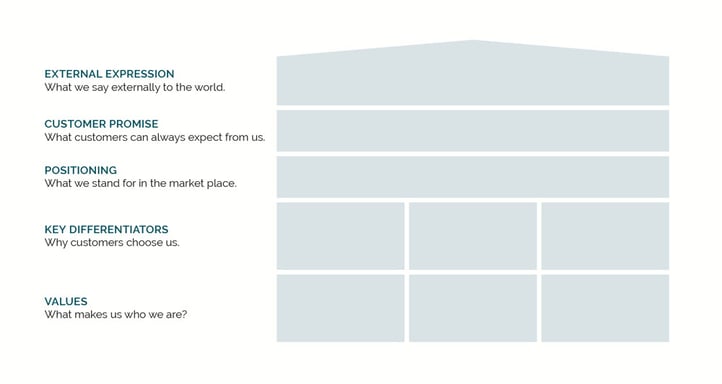
Your brand house ensures consistent behavior and messages over the long term.
A brand house is made for longevity. Although your communications might change year to year, using different words, styles and stories, they should all be built on a constant brand house.
Principle 7: Everything you say, and everything you do, affects your brand
We don’t need to look far to see what happens when the proponent doesn’t live up to the agreed rules and standards. Politicians are expected to follow the rules imposed upon the populace.
Seldom has a public reaction demonstrated so clearly the importance of adhering to an agreement, and the consequence of breaking it. It is especially offensive when the rule-maker is the rule-breaker.
Make sure that the brand promise that you create is something that you can and want to live by. And demonstrate your adherence to brand principles regularly in everything you do and everything you say. This is the essence of building trust in your brand.
Principle 8: Make your brand clear and visible to everyone in your organization
Julian Stubbs, my branding colleague, shared an interesting story. He asked a CEO what his company's vision was. He answered, “Go to the building entrance and ask our receptionist. From the first day at work, everyone in the company knows why we go to work.”
This illustrates the degree to which a brand ought to be known throughout your organisation. For your brand and its vision to be embraced, it has to be simple, understood and accepted by all – including the receptionist.
A brand is not a logo
If I would wish to convey one fundamental insight, it’s that a brand is so much more than the logo. The logo is the tip of an iceberg of belief in something that is worth believing in.
We believe in brands because they are organizational game changers, and make businesses and movements create something of value for our community and for society. If you’re interested in how branding can change your life science business, talk to me. I’d be happy to help.
